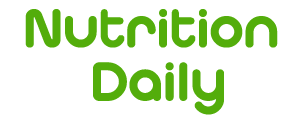Iron is an essential mineral which supports several bodily functions. It helps form and oxygenate our blood cells and haemoglobin. It helps convert food into energy and maintain a normal immune system. Iron cannot be produced by the body so one has to be dependent on dietary sources of iron.
Evaluation of iron
- Serum iron - measures iron level in serum
- Ferritin - measures the body’s ability o store iron
- Transferrin - measures the level of iron carrier
Who is most at risk?
Iron deficiency arises when certain physiological requirements cannot be met through the diet. Women of reproductive age are at a high risk of iron deficiency due to menstrual blood loss and deficiency occurs when losses or requirements exceed the intake of iron.
- Women at reproductive age
- Female athletes
- Women with high menstrual losses
- Pregnancy and Lactation period
- Vegetarians
Reasons of deficiencies
- Inadequate dietary iron content
- Consumption of poorly bioavailable iron
- Parasitic infection with blood loss contribute to the problem
- Iron metabolism disorder
- Certain medications may Inuit its absorption
- Low iron stores
Anaemia is described as a condition in which the number of RBSs in the blood is low and the blood cells have below normal haemoglobin.
RBCs help deliver oxygen from the lungs to the other parts of the body. Iron is a very important component of the haemoglobin molecule.
Consequences of iron deficiency
- For a range of functions related to physical activity and exercise
- Deficiency can impair physical activity and performance in endurance athletes
- In young children, motor and cognitive deficits
- In pregnant women, increased risk of perinatal complications, low birth weight babies
Factors that influence iron absorption
|
Physical state |
Heme >Fe2+> Fe3+ |
|
Inhibitors |
Phytates , polyphenols , calcium |
|
Facilitators |
Ascorbate , citrate , meat , fish , poultry |
Iron rich food sources
Heme iron :- Animal based foods such as red meats, fish and poultry.
Non-haem iron :- Mostly in plant sources such as dried apricots , dates, soybean , tofu , iron fortified cereals , jaggery. The bioavailability of Heme iron rich sources is more.
Iron supplements
It is important to regulate its concentration if you take supplements as excess of it may lead to tissue damage.
In conclusion, iron is needed in specific processes within the cell which produce energy and most importantly transportation of oxygen. It is important to have adequate intake of iron to avoid anaemia or other symptoms.





